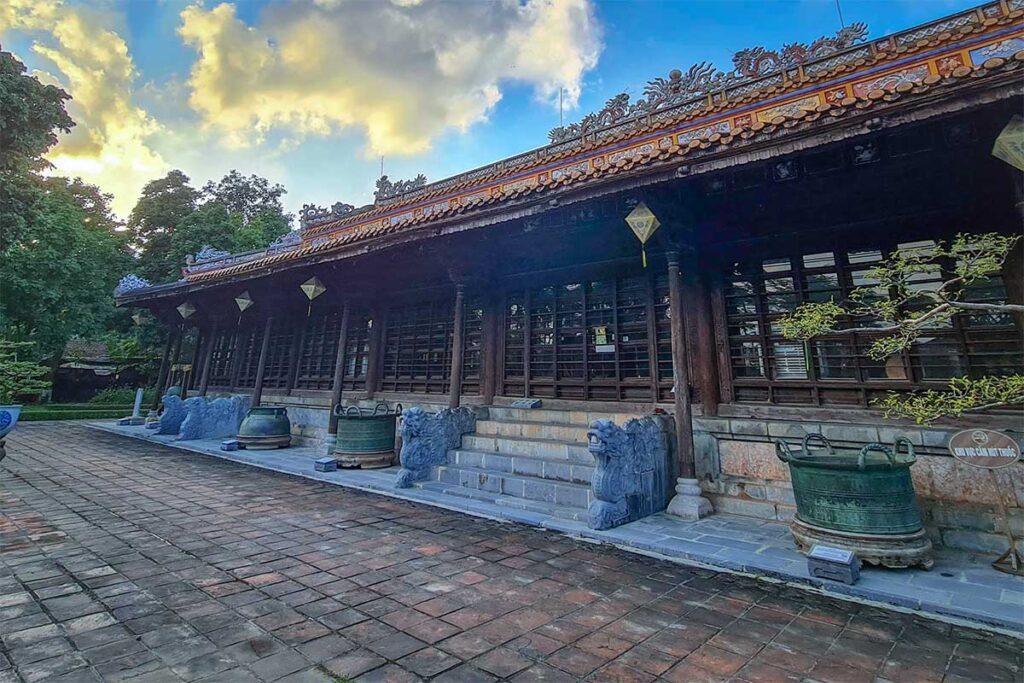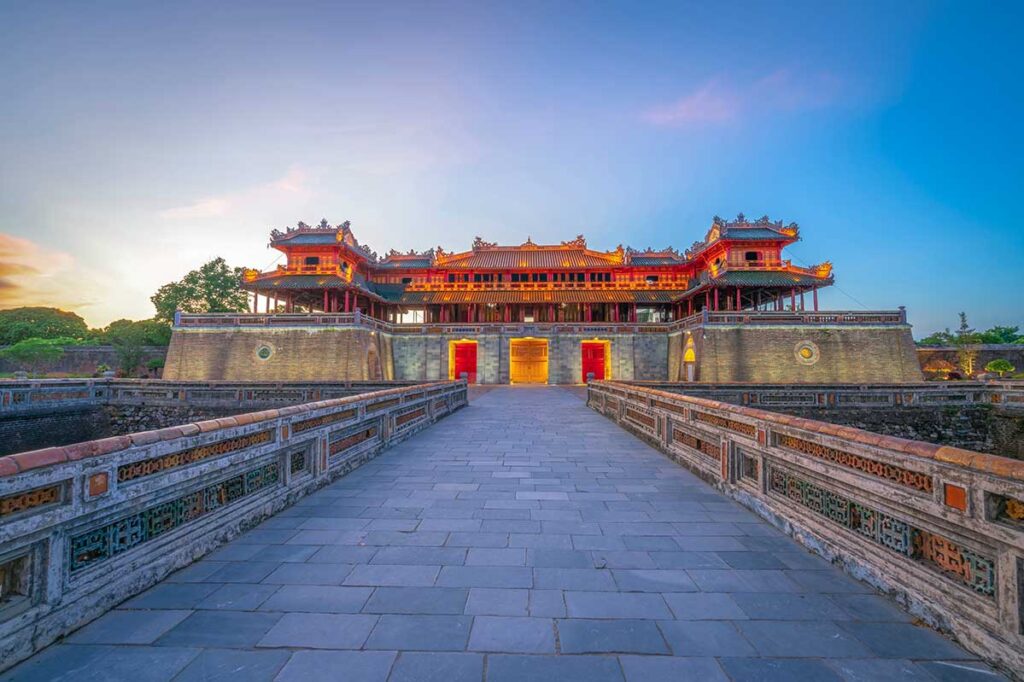What is Hue Museum of Royal Antiquities about?
The Hue Museum of Royal Antiquities is one of the city’s key heritage sites, sitting just outside the Imperial City’s eastern wall. Opened in 1923, it was the first museum in Hue and remains the main place to see authentic artifacts from the Nguyen Dynasty (1802–1945), along with a smaller but notable collection of Champa relics. Its main exhibition hall is housed in Long An Palace, a 19th-century royal building that is as much a reason to visit as the objects inside.
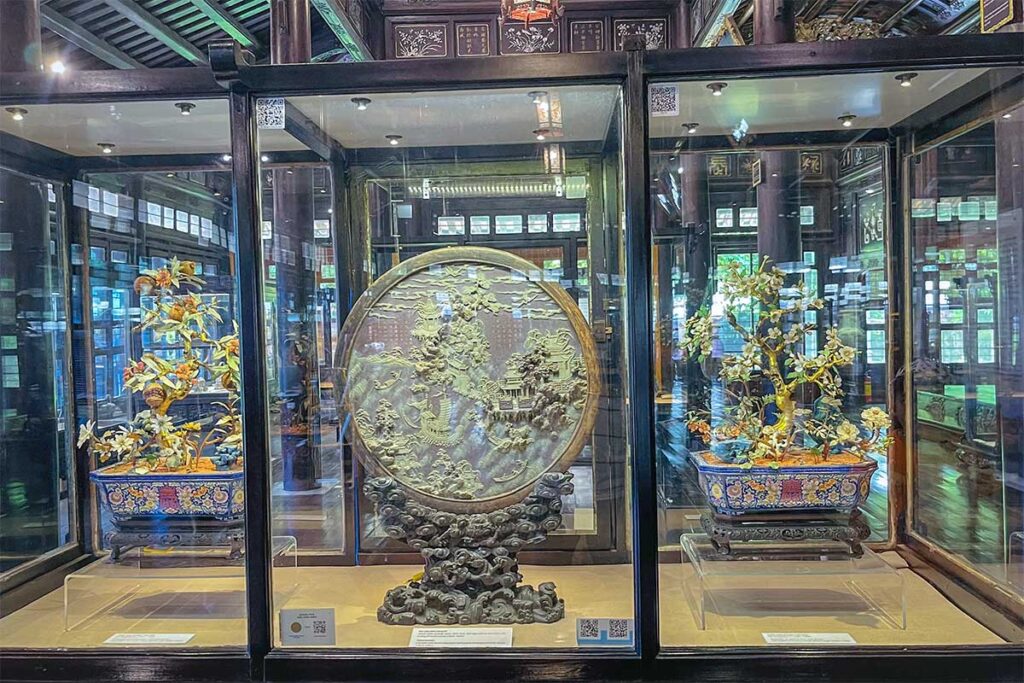
While the museum’s scope is modest compared to larger national museums, it plays an important role in preserving items closely tied to Hue’s imperial past. You won’t find endless galleries or interactive displays here, but you will see rare objects, personal belongings of the emperors, and traditional craftsmanship that are hard to find elsewhere in Vietnam. For anyone exploring the Imperial City, it makes for a worthwhile short stop that adds depth to the history you see in the main complex.
Practical visiting information
Address
03 Lê Trực Street, Phú Hậu Ward, Hue City – right outside the Imperial City’s Hien Nhon Gate (east gate).
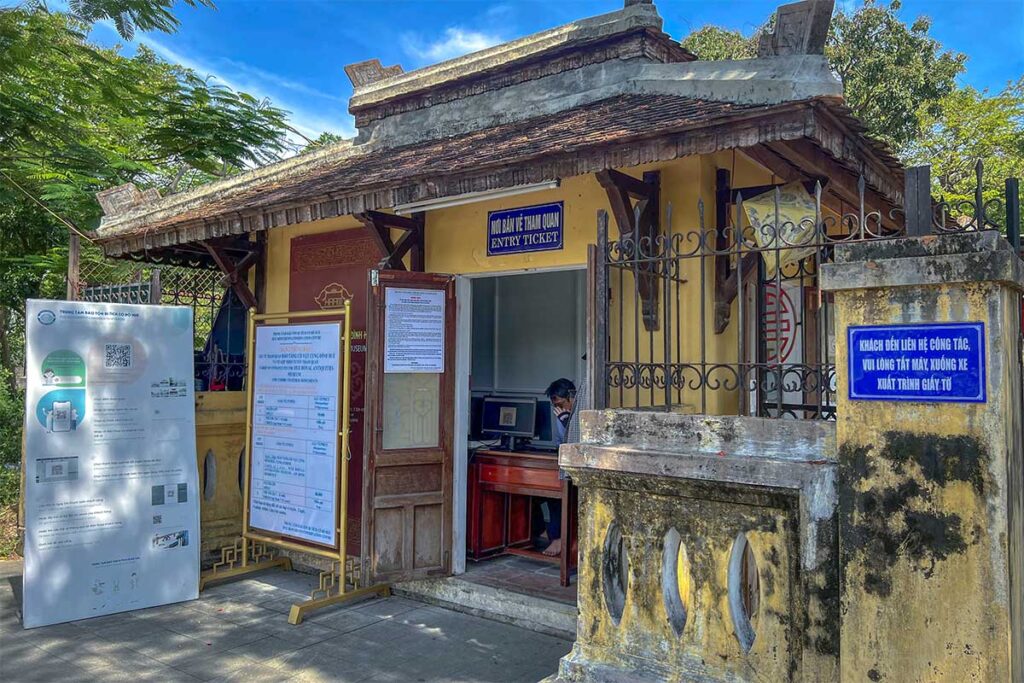
Opening hours
- Summer (Apr–Sep): 06:30 – 17:30
- Winter (Oct–Mar): 07:00 – 17:00
Entrance fee
- Included in the Hue Imperial City ticket.
- Stand-alone ticket: 50,000 VND (about 2 USD).
Tip: If you plan to visit the Imperial City, buy that ticket first — it’s better value and covers the museum too.
Time needed
Around 20–40 minutes is enough for most visitors, depending on how much detail you want to explore.
Long An Palace and Museum Grounds
Hue Museum of Royal Antiquities main exhibition space is housed inside Long An Palace, a historic wooden structure that is one of Hue’s finest surviving examples of Nguyen-era royal architecture. The surrounding grounds include a small courtyard with cannons, ornamental plants, and a few secondary buildings, but the palace itself is the clear highlight.
History of Long An Palace
Long An Palace was built in 1845 during the reign of Emperor Thieu Tri as part of the Bao Dinh Palace complex. It served as a private retreat for the emperor — a place to read, write poetry, and enjoy quiet moments away from court duties. In 1909, under Emperor Duy Tan, the palace was dismantled and moved to its current location on Lê Trực Street, where it was carefully reconstructed.
By 1923, it had been repurposed as the Khai Dinh Museum, making it one of Vietnam’s earliest modern museums. Today, it still retains much of its original structure and atmosphere, giving visitors the sense of stepping into a royal space from nearly two centuries ago.
Architecture of Long An Palace
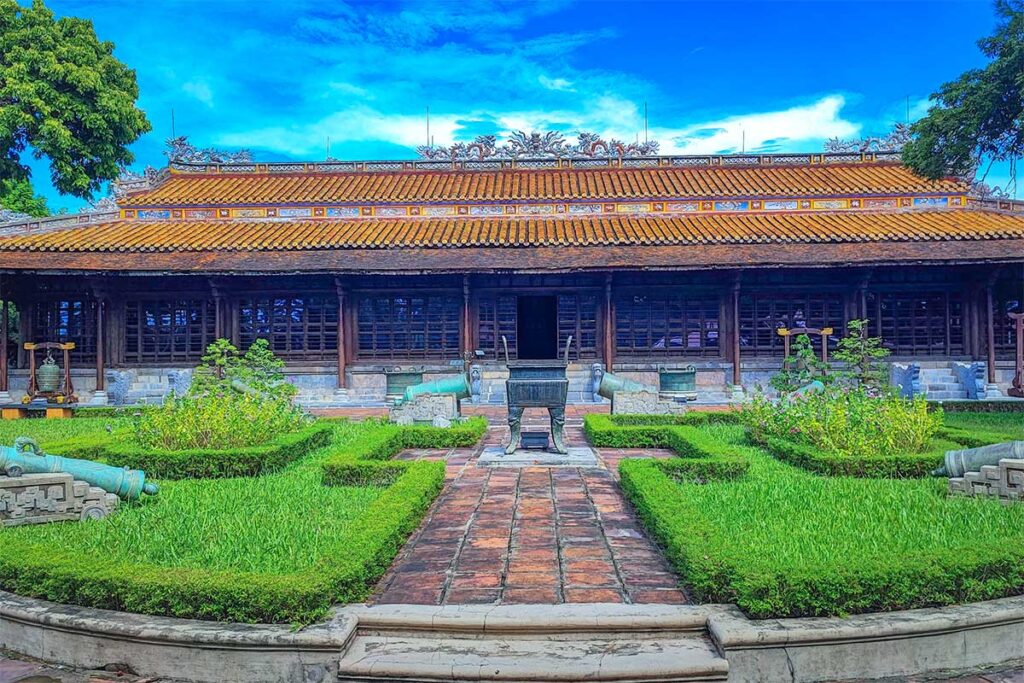
Long An Palace is designed in the “trung thiem diep ốc” style, with two connected buildings and overlapping roofs that create a harmonious, layered silhouette. The structure is supported by 128 ironwood columns, their surfaces left in natural wood tones rather than covered in lacquer and gold, which is unusual for royal halls of the time.
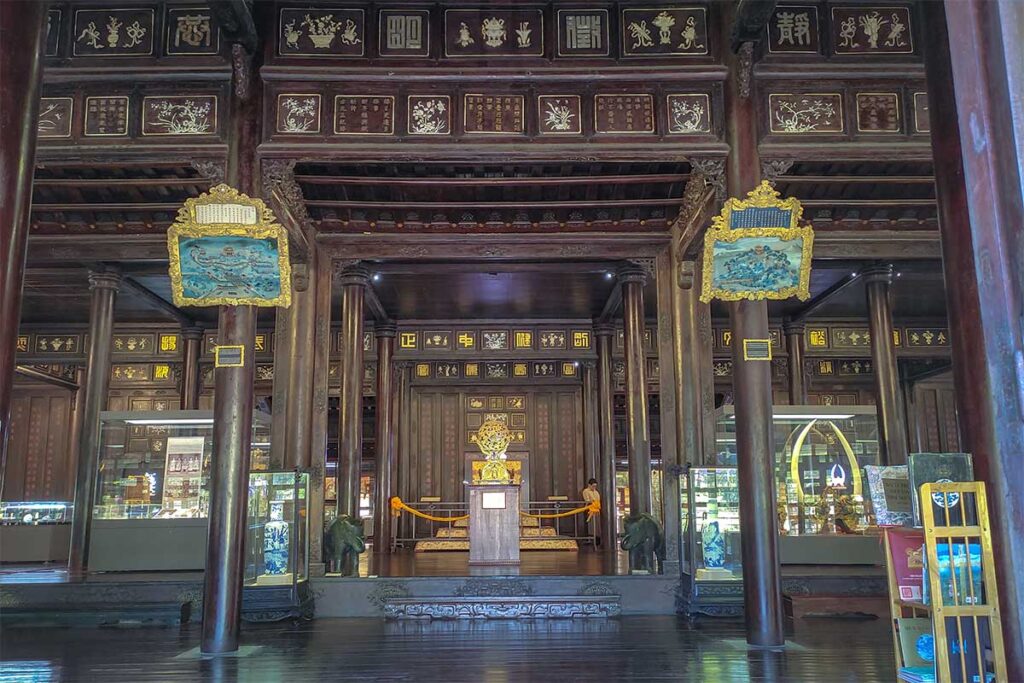
Intricate carvings of dragons, phoenixes, and the four sacred animals decorate beams and panels, showcasing the craftsmanship of the Nguyen court. One of the palace’s most distinctive features is the set of over 100 Chinese-character poems composed by Emperor Thieu Tri, engraved directly onto wooden surfaces. This combination of literary and architectural artistry makes the palace as fascinating as the artifacts it contains.
Highlights of Hue Museum of Royal Antiquities
The museum is not large, but its collection offers a focused look at the artistry, daily life, and ceremonial traditions of the Nguyen court, along with relics from the much older Champa civilisation. Displays are traditional and labeling is limited, but the objects themselves are often striking in their detail and craftsmanship.
1. Nguyen Dynasty costumes & textiles
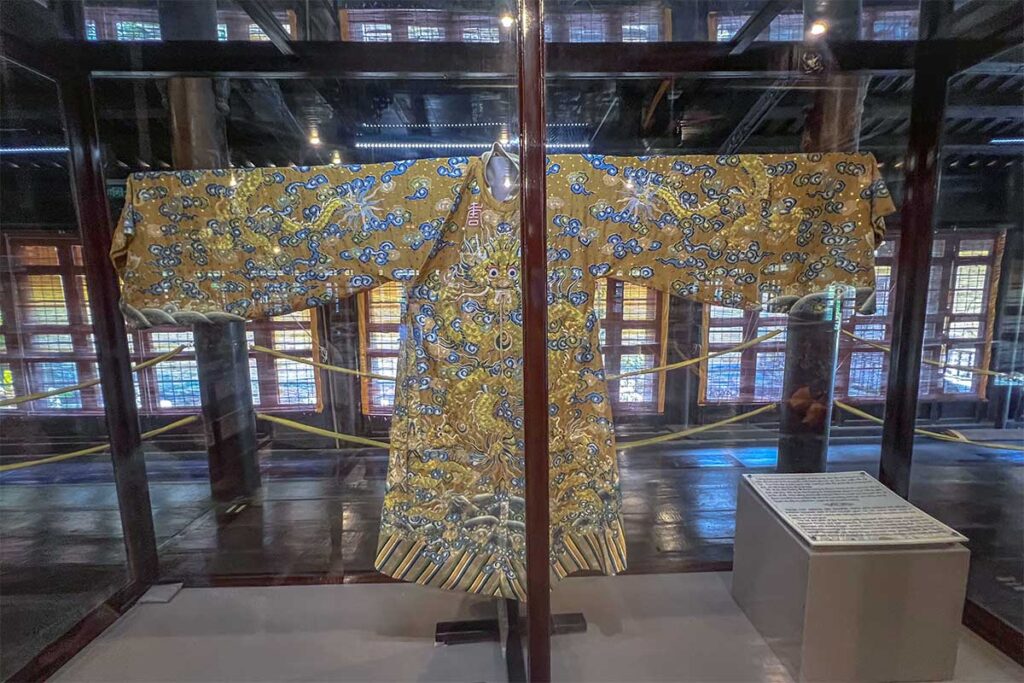
Elaborately embroidered royal robes, ceremonial outfits, and fine silk fabrics worn by emperors, queens, and mandarins. These pieces show the hierarchy of the court through their colors, motifs, and materials.
2. Imperial throne & furniture
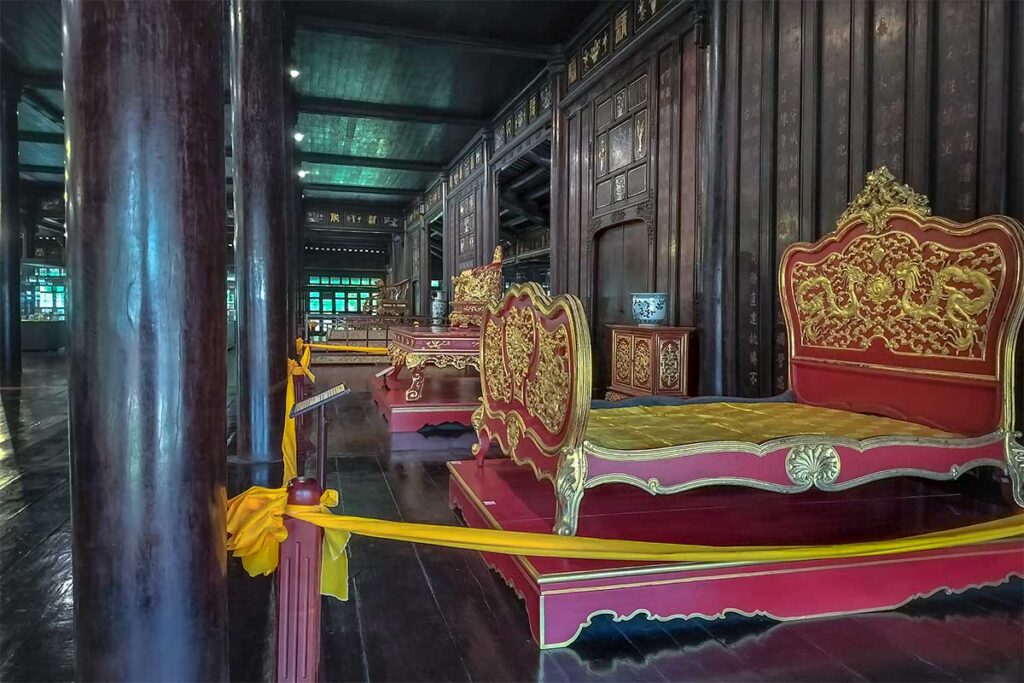
The small but ornate throne of Emperor Duy Tan — made to fit him when he was a child ruler — is a standout. Other items include the carved dragon bed, lacquered tea trays, and intricately inlaid wooden tables.
3. Ceremonial objects
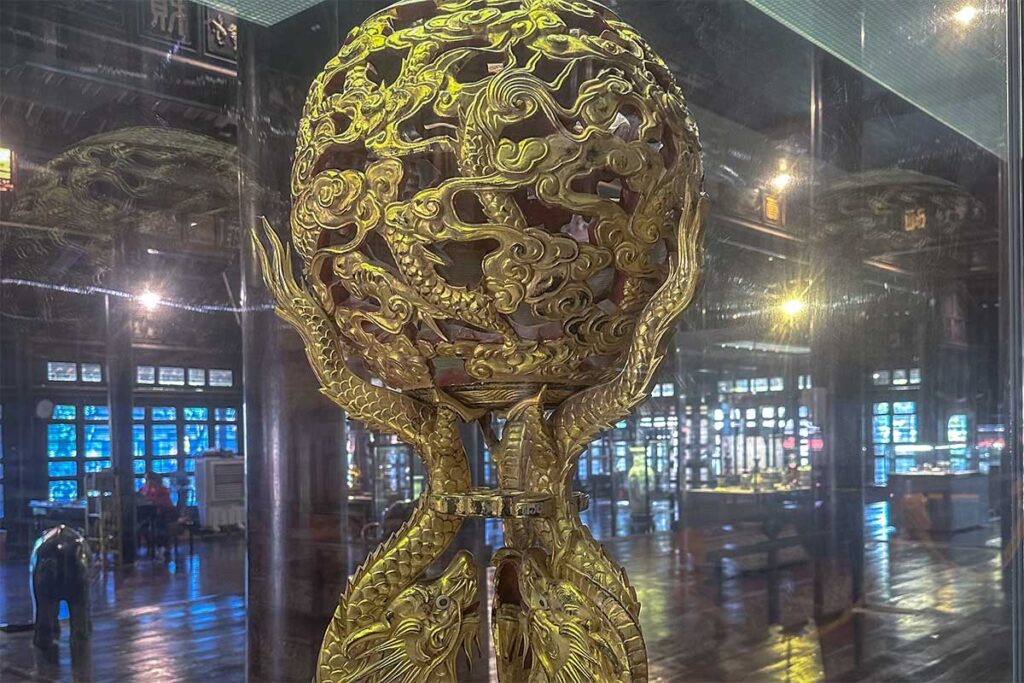
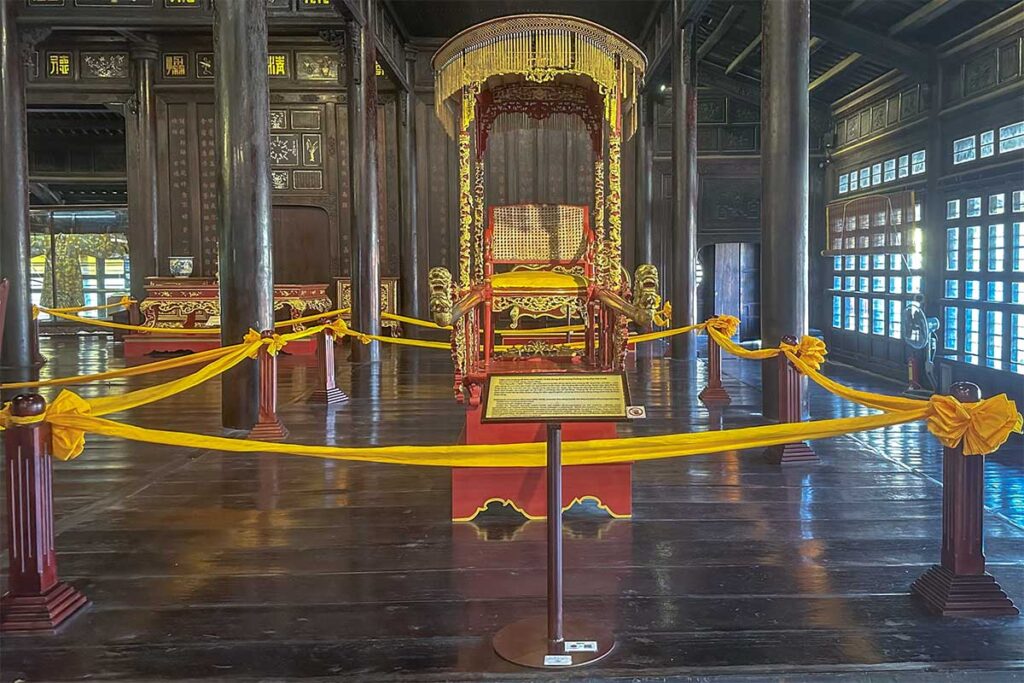
Dragon-shaped palanquins, bronze drums, offering trays, and other ritual instruments used during state ceremonies and religious rites.
4. Literature & administration
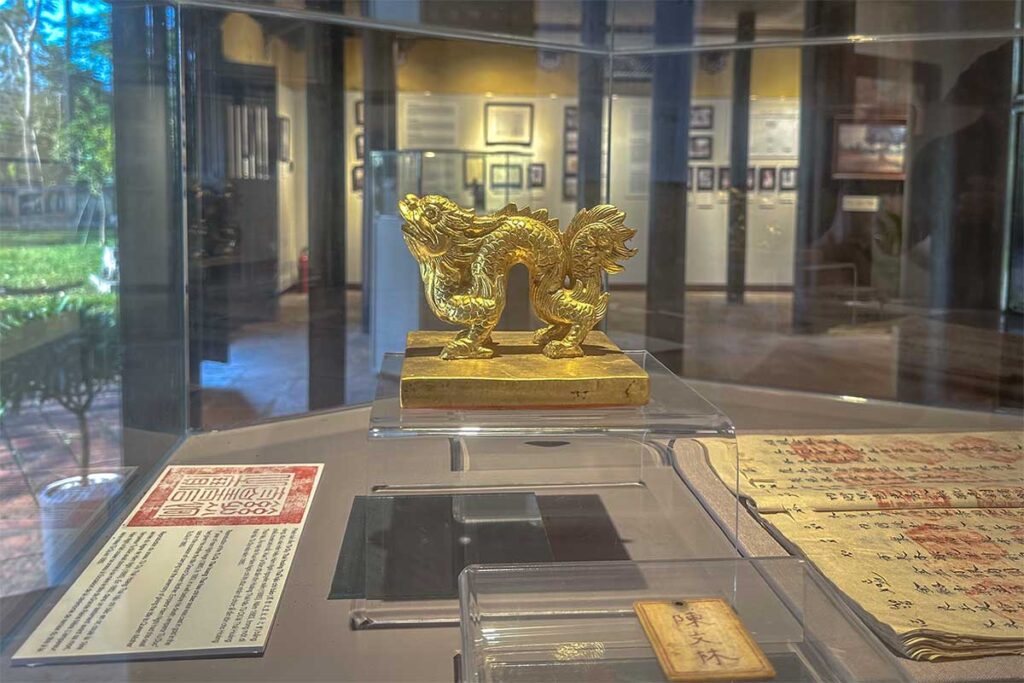
Original imperial edicts, handwritten decrees, manuscripts, and rare photographs of Nguyen rulers and court officials, offering a glimpse into the administrative and cultural life of the dynasty.
5. Nguyen-era games & leisure items
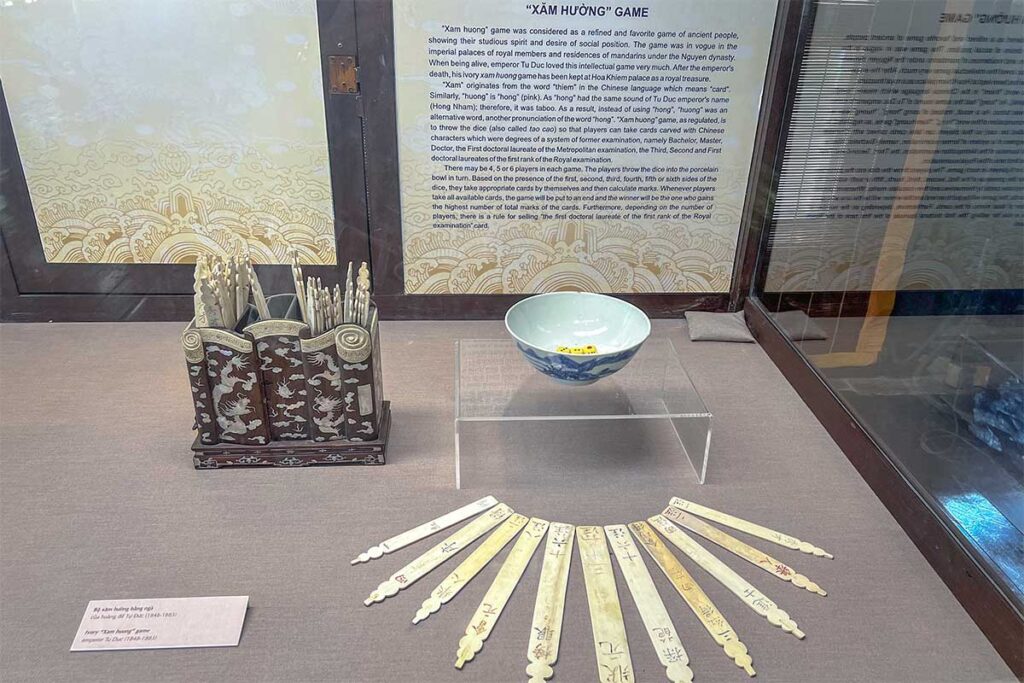
Traditional games such as “dau ho” (throwing darts into a jar) that were popular among the royal family, with several complete and well-preserved sets.
6. Ceramics collection
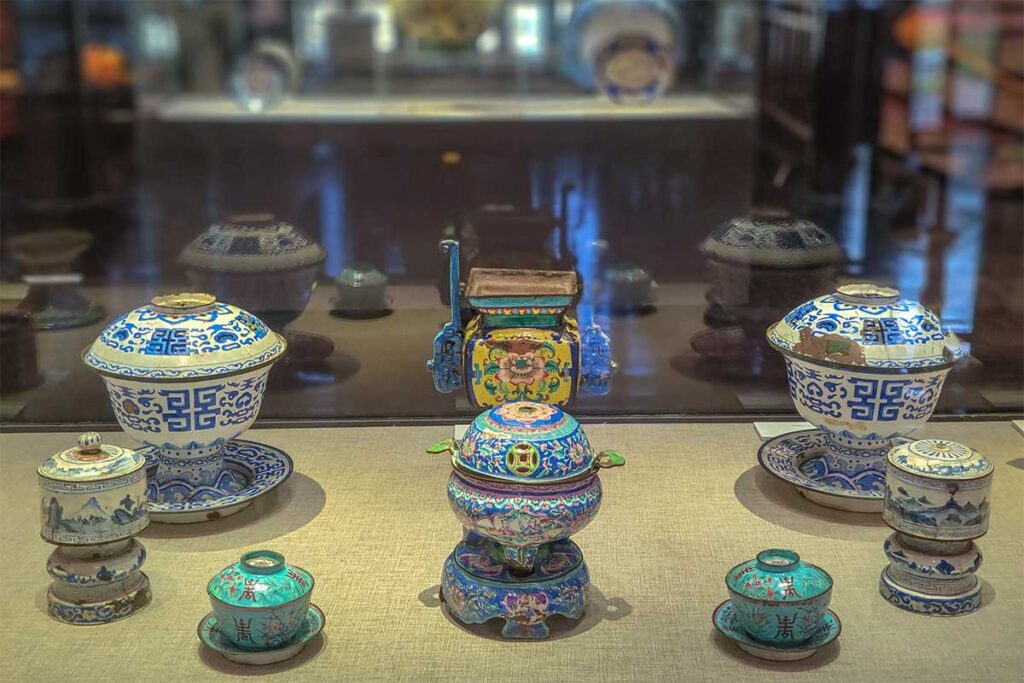
More than 3,000 pieces ranging from Ly–Tran dynasty celadon wares to Nguyen-era porcelain. Many bear dragon, phoenix, or floral motifs associated with imperial symbolism.
7. Ancient currency
Gold bars, copper cash coins, and rarities like the “Song Long” coin from Emperor Thieu Tri’s reign, illustrating the economy and craftsmanship of the time.
8. Champa artifacts
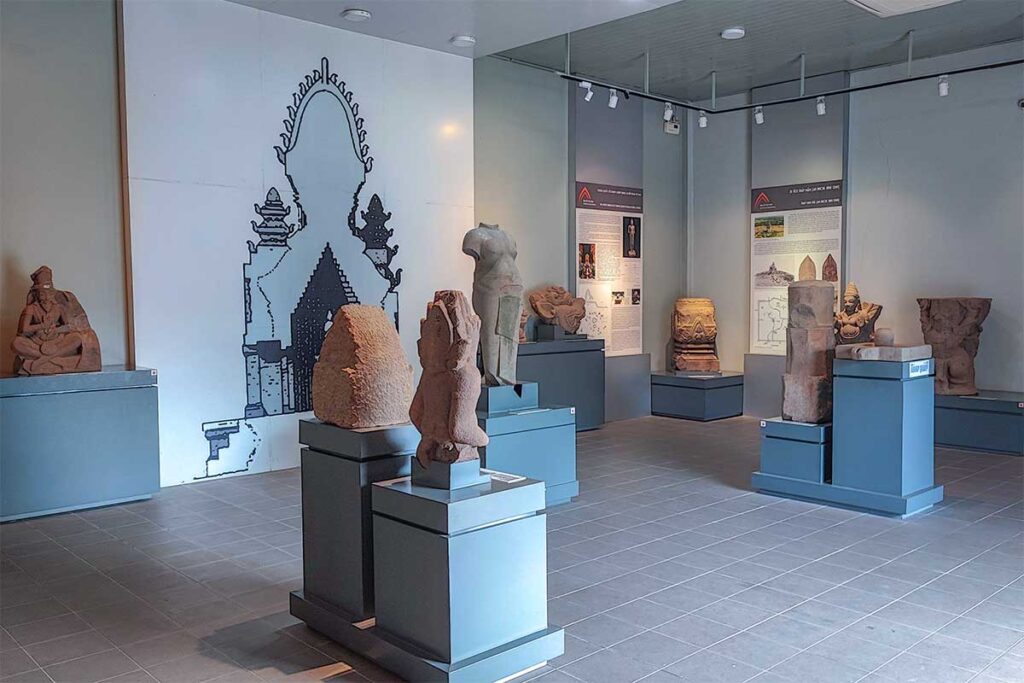
Bronze and sandstone sculptures, jewelry, and pottery dating from the 2nd to 19th centuries, collected from former Cham territories.
9. Cannons & courtyard displays
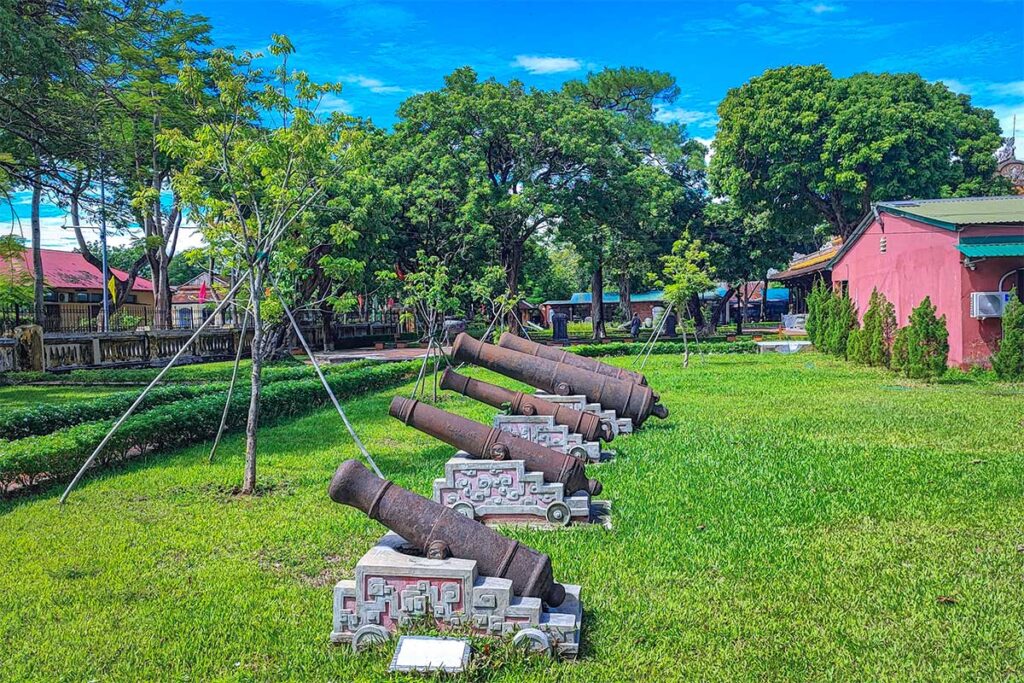
A small outdoor area with a mix of Vietnamese and imported cannons, ornamental plants, and shaded seating — a pleasant spot before or after viewing the palace interior.
How to get there
Combine with Hue Imperial City (recommended)
The easiest and most logical way to visit is as part of your Imperial City trip. From inside, exit through Hien Nhon Gate (east gate) — the museum is only about 250 metres away, a short three-minute walk. If you buy your Imperial City ticket first, entry to the museum is included.
Taxi or Grab
A quick and inexpensive ride from most hotels in Hue city centre costs around 80,000–100,000 VND (USD 3–4). The drive usually takes less than 10 minutes.
Walking
If you’re staying in the city centre, it’s a pleasant walk of 1.5–2.5 km depending on your location. You can cross the Perfume River via Truong Tien Bridge or Phu Xuan Bridge, both offering good views along the way. Expect 20–35 minutes on foot.
Cyclo
For a slower, more scenic journey, hire a cyclo from the city centre. It’s a relaxing way to see some of Hue’s streets before arriving at the museum.
Is Hue Museum of Royal Antiquities worth visiting?
On its own, the Hue Museum of Royal Antiquities is small and can feel underwhelming — especially if you’re expecting large exhibitions or detailed explanations in English. Some displays contain replicas, and the lack of in-depth signage makes it harder to fully appreciate the context of certain pieces.
That said, it’s still worth including in your itinerary if you’re visiting the Imperial City. The museum is just a short walk from the east gate, entry is included with the same ticket, and the Nguyen Dynasty artifacts — along with the setting of Long An Palace — offer an extra layer of insight into Hue’s imperial past.
